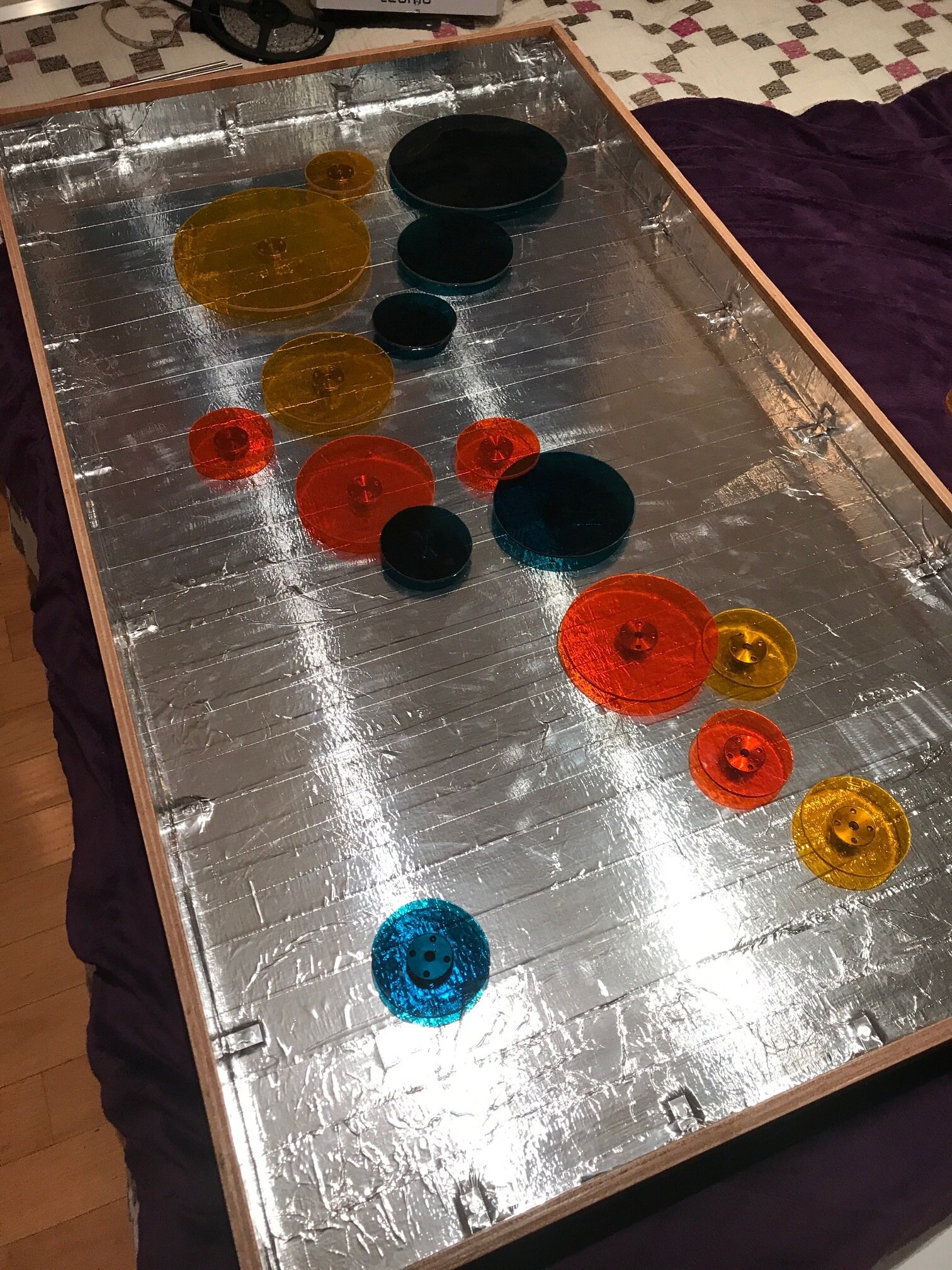Elijah Ezralow
Time in Circles and Motion, 2020
Stained glass, synchronous motors (5-6 and 2.5-3 RPMs) and flanges
48 x 36 x 5 inches
All forms of life perceive time differently. A second for a fly may be an eternity, but a year for a 5,000-year-old Bristlecone pine is fleeting. In our collective conscience, the face of a circle, often with numbers, symbolizes a traditional visualization of time. The notion of time often collapses into its visual perception. Our experience or perception of time, however, defies our simple representation of it. As we age, and our frame of reference grows longer, each moment gets shorter. Our perception of time is continually changing.
In this sculpture, these abstracted clocks spin at different rates and represent time perceived inconsistently. Together the circles move holistically, flowing. The circles are cut to the diameter of Fibonacci’s golden means, a series of numbers that converges to the sum of one.
The medium of stained-glass references decorative windows, often used in churches to depict stories. The light shining through these stained-glass windows represented the divine, providing a barrier between our earthbound existence and our eternal life. Light and its interaction with the natural world serves as an essential component to our understanding of the passage of time. The varying grains and inconsistencies of stained glass celebrate the beauty of light.
Time only exists because we define it. Einstein’s theory of relativity discovered that space and time are dependent on one another; a person in a shooting rocket feels time at a slower rate than a person driving to work. Time does not exist without being relative to our movements.
The clock’s significance is that it literally tells time relative to the movement of a second hand. A clock traveling in a shooting rocket would lag seconds behind by the time it got back to earth compared to a clock in a car driving to work. Time is not constant. As the viewer watches the circles rotate, the hope is that the passage of time, the ways we record it and count it, becomes more apparent in all its inconsistencies.



